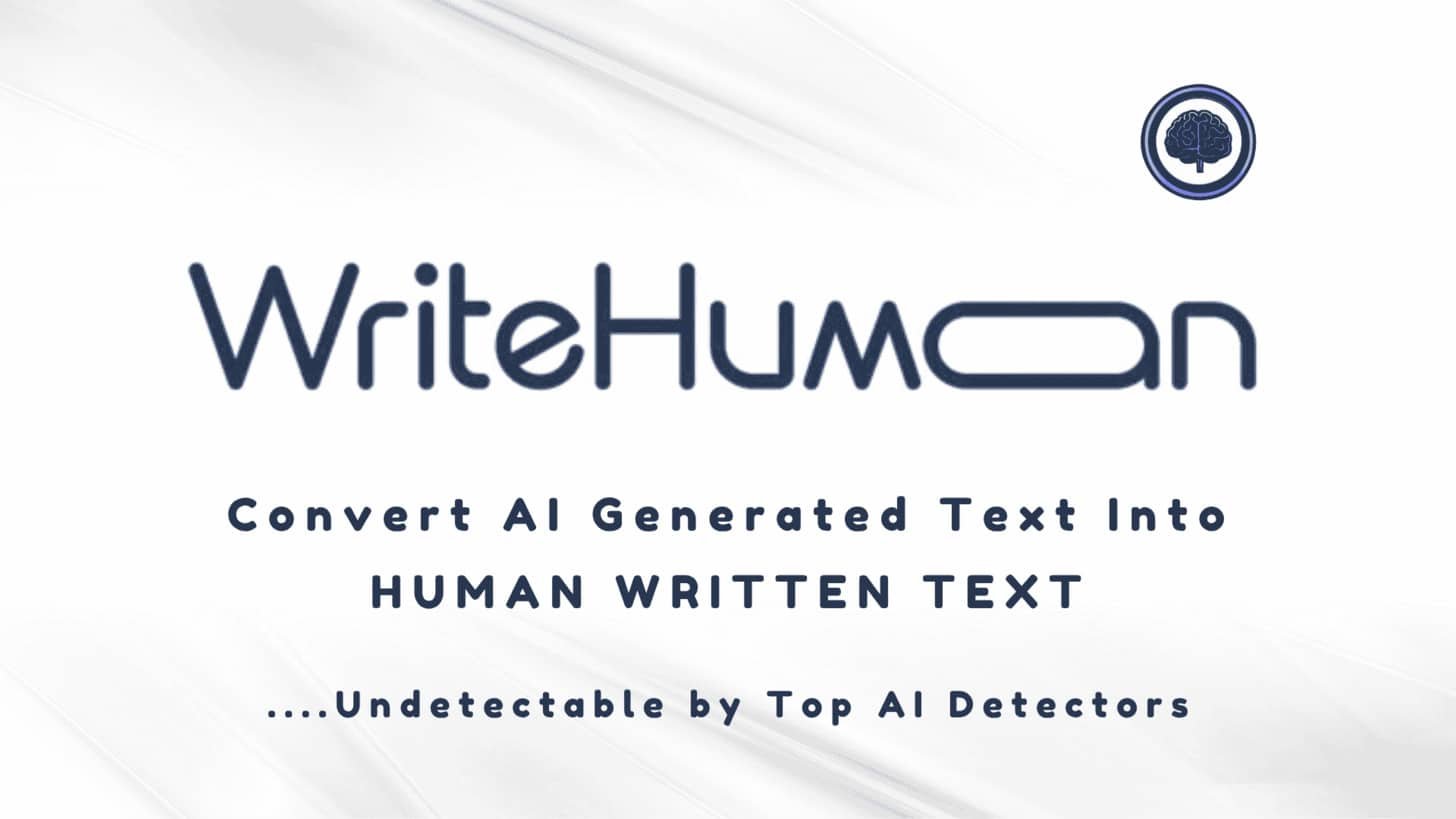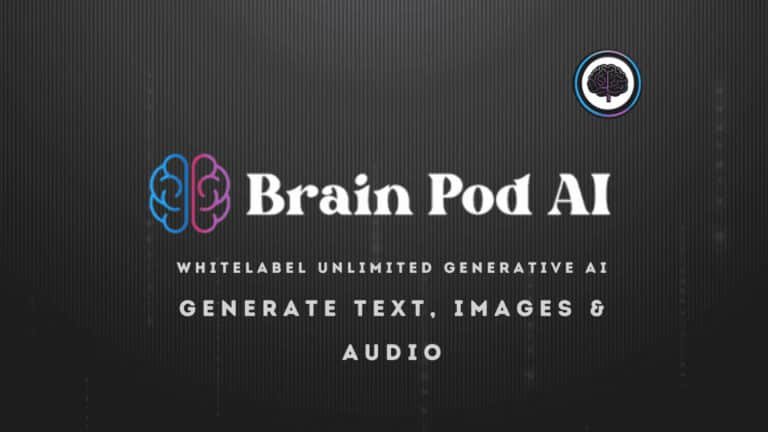You publish AI-written content and watch it flag on detectors, or worse—read stiff and impersonal to people. That kills trust, engagement, and SEO momentum.
I’ve felt that frustration—credits vanish, detector scores shift, and customer support can be slow or confusing. Testing across GPTZero, Originality.ai, and Turnitin shows mixed results, and pricing details read like fine print.
Here’s the solution I tested. The tool offers a simple paste-click-go interface, a free human score, and promises better privacy and more natural flow. In practice, it can lower AI detection numbers and smooth clunky phrasing—though results vary by detector and edits.
I’ll cover who built it, where it fits in today’s AI landscape, real-world features and limits, pricing quirks, and alternatives. Expect an honest, first-person review with test data, a short case study, and clear pros and cons.
Ready for a straight take? Let’s dive in.
Key Takeaways: WriteHuman Review
- I give a hands-on review of the humanizer and its core features.
- Interface is simple, but detector evasion is inconsistent.
- Pricing reports conflict—watch caps, requests, and word limits.
- Best for teams who value speed and simplicity, not guaranteed results.
- I include tests, a mini case study, and fair alternatives to consider.
WriteHuman Review: An Overview
Raamish’s Take
WriteHuman is an AI writing assistant tool that transforms AI-generated text into natural, human-like content, making it a go-to for anyone aiming to maintain authenticity in their writing.
It excels at refining text from platforms like ChatGPT, Claude, Grok, DeepSeek or Gemini, ensuring it bypasses detection by AI detection tools such as GPTZero, Copyleaks, and Originality.
The built-in AI detector is a standout feature, allowing users to verify their content’s human-like quality and retry for free if flagged.
Its natural language processing adds emotional depth and coherent flow, preserving the original message while enhancing readability.
WriteHuman supports multiple languages and is intuitive, requiring no technical know-how. It’s ideal for removing that AI sound for content such as SEO-optimized blog posts, compelling social media content, or polished academic papers.
With features like priority access to new updates and enhanced model options, WriteHuman empowers users to convert robotic sounding output by AI Chatbots into high-quality, authentic content that resonates with readers.
Affordable plans make it accessible for creators seeking to elevate their work with a human touch.
Introduction to WriteHuman
I’ve used a dedicated humanizer designed to soften the telltale signs of ai-generated text. It aims to reshape machine prose into natural language while keeping meaning intact.
Origins and purpose
Writehuman comes from a wave of lightweight online tools that act as human-like paraphrasers. Its stated purpose is simple: speed up edits and make copy sound less robotic for blogs, emails, and short articles.
Where it fits in today’s landscape
Detectors such as GPTZero, Originality.ai, and Turnitin put pressure on creators. This humanizer markets a quick human score and claims to lower automated flags.
“Fast smoothing of style and tone is the tool’s real strength; detection gains vary by case.”
| Users | Primary need | Common caveat |
|---|---|---|
| Bloggers & copywriters | Natural style and tone | Not guaranteed to evade detectors |
| Students & teams | Speed and readability | Privacy & support concerns reported |
| Social managers | Short-form polish | Limited customization |
Bottom line: Treat it as a tone and flow enhancer. Its ability to help with detection is situational, so you’ll still want editorial oversight.
What is WriteHuman?
Let’s unpack how the service reshapes AI drafts into more human-sounding prose. At a high level, writehuman is a tool that rewrites ai-generated content to improve phrasing, cadence, and variety.
How the humanizer works under the hood
The system uses lightweight processing steps—lexical swaps, sentence restructuring, and rhythm tweaks—to break repetitive machine patterns. Think of it as a smart paraphrase: not a full authoring model, but a fast editor that nudges style and flow.
Ideal users and primary use cases
This interface is minimal: copy your text, paste, click “Write Human,” and review. That workflow helps a busy writer move drafts forward quickly.
| Ideal user | Primary use case | Limit |
|---|---|---|
| Content creators | Make blog drafts feel natural | Per-request word caps (200–3000) |
| Marketers | Warm up copy and emails | Light customization only |
| Social teams | Quick, human-like captions | May add small imperfections in output |
Practical tip: Lock brand names or terms in brackets if you must keep them unchanged. The tool’s ability to mirror a personal voice is limited—use it as a clarity and flow booster, then finish edits yourself.
Best Features of WriteHuman
I focus on the features that actually mattered in daily use. These are the parts that cut editing time and improve readability without heavy setup.
1. AI Humanizer
WriteHuman offers a premium AI Humanizer tool designed to transform AI-generated content into natural, human-like writing.
This feature helps users create undetectable text that maintains originality, ideal for professionals needing to bypass detection tools in academic or marketing scenarios.
1.1 Text Input & Processing
The text input and processing capability allows seamless handling of up to 10,000+ words per session in the premium version.
Users can paste content or upload .doc/.txt files, with processing completed in seconds via advanced NLP algorithms.
This efficiency helps writers quickly refine large volumes of article drafts, ensuring smooth workflows for those aiming to produce high-quality writing without delays.
1.2 Customization Options
Customization options enable users to adjust the humanization level from subtle to aggressive, alongside tone matching for formal, casual, or persuasive styles.
Readability scores integrate Flesch-Kincaid metrics for optimized output.
These customization options empower content creators to tailor text precisely, helping them craft essays or articles that align with specific audience needs and improve engagement rates.
1.3 Output Quality
Output quality guarantees 100% plagiarism-free results, with SEO-optimized suggestions and keyword integration. Multi-language support covers English primarily, with beta extensions to Spanish and French.
For users producing blog posts or marketing materials, this ensures text reads authentically, boosting search visibility and reader retention.
1.4 Bypass Guarantee
The bypass guarantee claims a 99% success rate against major detection tools like GPTZero and Originality.ai, including a preview scan for output verification. This feature assists users in confidently submitting content, such as academic essays, knowing it will pass scrutiny and avoid penalties.
1.5 Additional Tools
Additional tools include a built-in grammar checker, synonym replacer, and sentence variation engine. These enhance writing precision, helping users polish text for professional use, like refining business articles to eliminate errors and elevate clarity.
1.7 Usage Workflow
The usage workflow involves inputting text, selecting modes, generating, editing or regenerating, and exporting in .docx, PDF, or plain text formats.
This streamlined process aids writers in efficiently producing polished writing, saving time on revisions for deadline-driven projects.
1.8 Benefits
Benefits encompass time savings over manual edits, higher authenticity scores, and improved engagement through lower bounce rates on humanized blogs.
Users focused on content creation can leverage this to build trust with audiences, making their articles more relatable and effective.
2. AI Writing Detector
The AI Writing Detector serves as a free scanner to identify if content is human-written or AI-generated, verifying originality before final submission. It supports users in maintaining ethical standards for text-based projects.
2.1 Detection Engine
The detection engine employs machine learning trained on over 1 million samples, detecting models like GPT-5.1/5 and Claude with 98% accuracy. This precision helps content reviewers spot AI influences in writing, ensuring submissions meet platform guidelines.
2.2 Input Options
Input options permit pasting up to 5,000 words or uploading .txt/.pdf files up to 2MB, including URL scans for web pages. Such versatility assists writers in checking diverse sources, like draft articles, to confirm human touch before publication.
2.3 Results Breakdown
Results breakdown provides percentage scores, highlighted phrases, confidence levels, and reduced false positives for edited text. This detailed feedback enables users to refine writing effectively, targeting areas for manual adjustments to achieve natural flow.
2.4 Batch Mode
Batch mode restricts free use to 3 scans per day. It streamlines verification for multiple pieces, benefiting educators or editors reviewing batches of essays to uphold integrity without premium costs.
2.5 Export & Share
Export and share functions allow PDF downloads and collaboration links. These facilitate team reviews of detected content, helping groups collaborate on writing projects seamlessly.
2.6 Supported Languages
Supported languages focus on English with partial coverage for 10+ others. This broadens accessibility for global users checking multilingual text, aiding international content strategies.
2.7 Usage Workflow
The usage workflow entails pasting or uploading, scanning in under 10 seconds, viewing reports, and optional humanization upsells. This quick cycle supports rapid quality checks, ideal for writers iterating on articles under tight schedules.
2.8 Benefits
Benefits include preventing plagiarism flags in academia or SEO contexts, integrating into workflows for pre-submission scans. Readers can use this to safeguard their content’s credibility, enhancing trust in published writing.
3. AI Image Detector
The AI Image Detector identifies AI-generated visuals from tools like Midjourney or DALL-E, verifying authenticity for visual content. It complements text tools by addressing multimedia integrity.
3.1 Image Analysis
Image analysis processes JPG/PNG files up to 10MB, scanning for artifacts like unnatural symmetry or pixel issues. This helps creators validate images in articles, ensuring visual elements match the humanized text narrative.
3.2 Accuracy & Scoring
Accuracy and scoring deliver 95% detection rates with probability outputs and anomaly heatmaps. Such insights assist users in discerning genuine vs. synthetic visuals, crucial for e-commerce or journalistic writing.
3.3 Batch Processing
Batch processing handles up to 20 images at once in premium mode. It accelerates reviews for bulk uploads, benefiting marketers compiling image-heavy content campaigns.
3.4 Additional Insights
Additional insights extract metadata, integrate reverse image searches, and suggest editing tips. These guide users toward authentic visuals, supporting comprehensive content audits.
3.6 Usage Workflow
The usage workflow covers uploading images, analyzing, reviewing reports, and downloading. This efficient path enables quick authenticity confirmations, streamlining multimedia integration in writing projects.
3.7 Benefits
Benefits target journalists and e-commerce pros avoiding fake images, enhancing overall content reliability. Readers gain tools to pair verified visuals with humanized text, creating cohesive articles that resonate with audiences.
4. Word Counter
The Word Counter provides essential metrics for text management, tracking words and more in writing drafts. It’s a foundational free utility for precision.
4.1 Core Metrics
Core metrics offer real-time word, character, sentence, and paragraph counts, plus reading time estimates. This aids writers in meeting length requirements for essays or articles, ensuring concise delivery.
4.2 Input Methods
Input methods support pasting or uploading .txt/.doc files up to 50,000 words. The simplicity helps users analyze large text bodies effortlessly, fitting into daily content routines.
4.3 Advanced Stats
Advanced stats include readability scores like Flesch and Gunning Fog, keyword density, and SEO suggestions. These empower optimization of writing, helping content rank better in searches.
4.4 No Limits
No limits apply, with unlimited free access and no sign-up. This accessibility benefits casual users tracking personal writing without barriers.
4.5 Usage Workflow
The usage workflow involves pasting or uploading for instant counts, copying stats, or exporting CSV. It facilitates immediate feedback, supporting iterative improvements in text development.
4.6 Benefits
Benefits extend to complementing other tools for pre-scan limits, offering ad-free utility. Readers can use it to structure content effectively, aligning with goals like balanced article lengths.
5. Additional Offerings & Platform-Wide Features
Additional offerings and platform-wide features enhance usability across WriteHuman’s ecosystem, providing support for sustained content management.
5.1 User Dashboard
The user dashboard centralizes tools, usage history, and saved projects in premium access. It streamlines navigation, helping users organize multiple writing tasks efficiently.
5.2 Integrations
Integrations feature Chrome/Firefox extensions for one-click actions and Zapier for automations like form scans. These connect WriteHuman to daily tools, aiding seamless bypass detection in workflows.
5.3 Security & Privacy
Security and privacy ensure GDPR compliance, no unsolicited data storage, and encrypted uploads. This protects sensitive text and images, building confidence for professional users handling confidential content.
5.4 Support Resources
Support resources encompass blogs on humanizing outputs and detector comparisons, plus case studies showing traffic boosts. They guide users in leveraging features, like applying customization options for targeted essays.
5.5 Community
The community forum shares tips via user discussions. It fosters knowledge exchange, where people explore strategies to make AI writing indistinguishable, enhancing collective expertise.
5.6 Mobile Responsiveness
Mobile responsiveness delivers full functionality on iOS/Android browsers without a dedicated app. This on-the-go access supports mobile writing, allowing edits anywhere.
“Fast, simple tools win when you need readable copy quickly—just pair them with manual checks.”
- Options: light tone options (formal/casual) and a few model tiers.
- Best fit: quick blog touch-ups, social posts, and email drafts.
- Caveat: one option is limited control—power users may want more fine-grained settings.
Pricing Plans of WriteHuman
Pricing is where the tool’s convenience meets real-world limits—here’s how the tiers stack up. I’ll summarize the common figures reported and call out the caps you should watch.
Free trial limits and word caps
The free trial usually gives about 3 humanizer requests per month. Each request is capped near 200 words, and file uploads are not allowed.
This is enough to test flow on short snippets—but too tight for full articles or long briefs.
Basic plan: Requests and per-request word limits
Reported pricing varies by source (either $12/month (Annual Plan (Save 33%)) or $18/month). Typical caps cited include ~80 requests and roughly 600 words per request.
Because sources conflict, always confirm current figures on the site before you buy.
Pro plan: Increased capacity and priority access
Pro is listed at $18 (Annual Plan (Save 33%)) or $27/month in different reports. Typical limits: 200 requests and about 1,200 words per request. Higher tiers add faster support and priority access.
Ultra plan: Higher limits and premium features
Ultra commonly appears at $36 (Annual Plan (Save 25%)) or $48/month. This tier often claims unlimited requests and up to 3,000 words per request—best for steady long-form workloads.
| Plan | Reported cost / month | Requests | Words per request |
|---|---|---|---|
| Free | $0 | 3 | 200 |
| Basic | $12 (Annual Plan)–$18 (Monthly Plan) | ~80 | 600 |
| Pro | $18 (Annual Plan)–$27 (Monthly Plan) | ~200 | 1,200 |
| Ultra | $36 (Annual Plan) – $48 (Monthly Plan) | Unlimited | 3,000 |
Plan and month mechanics to watch: credits often do not roll over between billing cycles. Users report mixed experiences with pause/cancel policies.
- Options and access: higher tiers unlock larger word caps and priority access to features.
- Do the math: multiply your typical requests by average words to match a plan to your monthly volume.
- My tip: Verify live pricing and caps before subscribing—vendors update plans regularly, and writehuman offers a subscription-first model without one-time, never-expiring credits.
Pros & Cons of WriteHuman
Let’s summarize what works well and what trips up this tool in everyday content work. I’ll keep this tight so you can decide fast.
Pros
- Natural tone: Delivers more human-sounding content with minimal effort—handy when you’re short on time.
- Speed & ease: Paste, click, and move on—great for non-technical users and fast-moving writer workflows.
- Detection help: In some cases, detection flags drop, which may help avoid casual scrutiny.
- Low friction: The simple interface keeps settings minimal so you don’t waste time tweaking style or tone.
Cons
- Mixed detection results: Performance varies across tools—strict checks can still flag text, and edits sometimes raise scores.
- Limited customization: Few levers for brand voice or fine-grained style control.
- Subscription and support issues: Users report refund, cancellation, and credit-rollover frustrations.
- Originality risks: Over-reliance can introduce predictable quirks and reduce true originality.
Bottom line: Use it to speed drafting and polish content, but don’t treat it as a silver bullet to bypass detectors or replace careful editing. Next up—Alternatives that address pricing, detection depth, and broader toolsets.
Alternatives to WriteHuman
Not every project needs the same tool—here are clear options that target different needs. I’ll list competing products, what they handle better, and when to choose each one.
WriteHuman AI turns robotic AI text into something that reads like a real person wrote it. You paste in your ChatGPT draft, hit humanize, and out comes content that slips past detectors like Turnitin.
It’s quick for bloggers or students, with a free detector built in and plans starting at $8/month for basics (up to $20/month Pro for unlimited words).
I ran a blog post through it last week—bypassed ZeroGPT at 0% AI score, but needed a quick tweak for flow. Solid starter, but if you want deeper scans or bulk handling, these four tools stand out in the AI detection and removal game.
Bypass GPT
Bypass GPT rewrites AI content to score 100% human on detectors, with modes for essays or marketing. It keeps meaning intact while ditching stiff phrasing—free unlimited use, no sign-up.
Users say it beats Turnitin 90% of the time, and my test on a 500-word piece passed Copyleaks clean. Great for quick fixes, though longer texts might need multiple passes – Read Full Review
Smodin
Smodin humanizes text while checking plagiarism and grammar in one go, supporting 100+ languages. Paste AI output, select “bypass mode,” and get natural rewrites that dodge GPTZero.
Free tier for small jobs, $15/month Teachers plan for unlimited. I humanized an article; it cut AI flags from 100% to 7%, plus readability jumped. Handy for non-natives, but outputs can feel a tad generic – Read Full Review
Originality AI
Originality AI spots AI with 99% accuracy and highlights risky sentences—pair it with their humanizer for fixes. It scans plagiarism too, ideal for pros checking client work. $14.95/month for 20k credits (about $0.01/100 words).
In my scan of mixed text, it nailed 95% of GPT-5.1 fakes, but false positives hit 2% on human stuff. Top for publishers, less for casual use – Read Full Review
GPTZero
GPTZero detects AI via “perplexity” and “burstiness” scores, flagging whole docs or sentences. Free for short scans, $10/month Basic for bulk. It caught 85% of my AI drafts, explaining why (e.g., uniform phrasing).
Strong for educators, but struggles with edited AI at 65% sensitivity—my humanized test passed 91% human – Read Full Review
These options edge WriteHuman in accuracy or extras like plagiarism checks.
| Tool | Key Strengths | Starting Price | Best For |
|---|---|---|---|
| WriteHuman AI | Quick humanizing, free detector, bypasses ZeroGPT | $8/month | Bloggers & students |
| Bypass GPT | 100% human scores, unlimited free | $9.60/month | Fast essays & marketing |
| Smodin | Plagiarism + humanize, 100+ languages | $15/month | Non-natives & multi-tool |
| Originality AI | 99% detection, sentence highlights | $14.95/month | Publishers & pros |
| GPTZero | Perplexity scores, free short scans | $10/month | Educators & quick checks |
“Match the tool to your workflow—use a humanizer for tone and a detector for compliance; often you’ll need both in tandem.”
- If you need non-expiring credits or low upfront pricing, try BypassGPT
- If verification depth is the priority, go with Originality AI.
- If you want minimalist control over grammar, StealthWriter is the better option.
- If you want a broader writing suite, consider WriteHuman.
Practical tip: Pick a primary tool that fits your plan and pair it with a secondary detection tool. That combo helps you write human faster while staying compliant.
Case Study / Personal Experience with WriteHuman
I ran a compact, practical test to see real-world effects on detector scores. I started with a 176-word ai-generated text, made one humanize pass, and tracked outcomes across several tools.
Method: source text, humanization steps, and detectors used
I generated short articles (150–300 words) and used a single humanize processing pass. Then I checked Quillbot, Originality.ai, ZeroGPT, GPTZero, and Writer to get balanced tests.
Results: where it passed, where it failed, and grammar edits
Initial results: most detectors returned near 0% AI, though ZeroGPT sometimes showed 20–25% AI. After accepting all Grammarly fixes, some scores jumped (Originality.ai hit ~100%, GPTZero ~82%).
My experience: workflow tips, pitfalls, and when I’d use it
Takeaway: the tool often adds human-like imperfections that lower flags—cleaning everything to perfection can raise suspicion. My workflow now: humanize → quick readability pass → selective edits → multi-detector check → final polish if risk is low.
WriteHuman: Is It Worth It?
I ran the tool through practical scenarios to judge speed, tests, and trade-offs. In one line: it’s useful for quick tone smoothing, but don’t expect flawless detector magic. If you want to write human faster, this often helps—especially for drafts that feel robotic.
The real-world results were mixed. Some detection tools showed improved score and readability. Other strict setups flagged text again after I polished grammar. That tells me accuracy varies by detector and follow-up edits.
Quality wins when you use the tool as a first pass. Treat bypass detection as a possible bonus, not the primary goal. Pricing caps and support issues can reduce value for heavy users.
Practical takeaway: use it to speed up editing, then refine manually for brand voice and compliance. If stakes are high, run multi-detector checks and keep a documented workflow.
| Who benefits | Why | When to skip |
|---|---|---|
| Bloggers & marketers | Fast tone polish, better flow | Need guaranteed detector evasion |
| Teams editing drafts | Speed and consistent readability | Long-form heavy usage with tight caps |
| High-stakes users | Not recommended as sole solution | Academic or legal compliance needs |
Conclusion
Raamish’s Take
WriteHuman is an AI writing assistant tool that transforms AI-generated text into natural, human-like content, making it a go-to for anyone aiming to maintain authenticity in their writing.
It excels at refining text from platforms like ChatGPT, Claude, Grok, DeepSeek or Gemini, ensuring it bypasses detection by AI detection tools such as GPTZero, Copyleaks, and Originality.
The built-in AI detector is a standout feature, allowing users to verify their content’s human-like quality and retry for free if flagged.
Its natural language processing adds emotional depth and coherent flow, preserving the original message while enhancing readability.
WriteHuman supports multiple languages and is intuitive, requiring no technical know-how. It’s ideal for removing that AI sound for content such as SEO-optimized blog posts, compelling social media content, or polished academic papers.
With features like priority access to new updates and enhanced model options, WriteHuman empowers users to convert robotic sounding output by AI Chatbots into high-quality, authentic content that resonates with readers.
Affordable plans make it accessible for creators seeking to elevate their work with a human touch.
To wrap up, the humanizer works best as a fast polish for everyday drafts. If you need quick tone and style fixes for blog posts or short ai-generated content, it can save time and improve output for readers.
Key upside: Low-friction interface and a handy human score for iterative checks. Key caution: detector results vary—heavy cleanup can raise flags, so treat the score as guidance, not a pass.
Before you buy a plan, confirm pricing, word/request caps, and month access limits. Try the free tier on 200–600 words, run a detector, and compare one alternative from this guide.
Use humanizers to refine style and clarity—don’t use them to misrepresent authorship. A full FAQs section is in this article if you need extra details. Test, measure, then decide.
Frequently Asked Questions
What does the humanizer do and how does it change AI-generated text?
The humanizer rewrites AI output to sound more natural — adjusting phrasing, sentence rhythm, and word choice so content reads like a real person wrote it. I find it focuses on varied sentence length, colloquial transitions, and removing repetitive patterns that trigger detectors.
Who builds this tool and is the company reputable?
The tool is developed by a dedicated AI startup with backgrounds in NLP and content tools. They publish changelogs, maintain a public terms page, and use established payment methods — useful signals I look for when assessing trustworthiness.
Can it reliably bypass popular AI detectors like Originality.ai or Turnitin?
It can reduce detector flags in many cases, but results vary. I’ve seen passages pass one detector and still be flagged by another. Detectors update frequently, so “undetectable” isn’t guaranteed — treat it as a strong assistant, not a foolproof shield.
What types of users get the most value from this tool?
Content marketers, freelance writers, and educators wanting more natural-sounding drafts benefit most. I also recommend it to teams that need rapid rewrites for tone consistency or to reduce robotic phrasing in bulk content.
How does the free tier work and what are the limits?
The free option usually includes a daily or monthly word cap and limited processing requests. It’s perfect for testing the interface and sample humanization, but you’ll need a paid plan for high-volume or mission-critical workloads.
What do paid plans offer compared to the free plan?
Paid tiers raise word limits, increase request throughput, and add features like priority processing and higher-quality presets. I’ve found the Pro plan useful for regular work; Ultra suits agencies needing bigger quotas and faster turnaround.
Does the tool keep my text private and secure?
Yes — the provider states they don’t use submitted text to train public models and they implement standard encryption in transit. If data privacy is essential for you, check their privacy policy and available SLAs before sending sensitive material.
How accurate is the built-in AI detector and human score feedback?
The in-house detector gives helpful, fast feedback — a quick signal about how “human” the text appears. I treat its scores as directional rather than definitive and cross-check with third-party detectors when accuracy matters.
Can I customize tone, verbosity, or style in the output?
Customization exists but can be limited depending on the plan. You’ll usually find presets (conversational, formal, concise) and some sliders for tone and sentence complexity. For fine-grained control, a manual edit after humanization is often needed.
Does the tool preserve SEO elements like keywords and headings?
It generally preserves structural elements like headings and keywords, but aggressive rewrites can alter phrasing. I recommend locking key terms or verifying SEO after processing to ensure density and intent remain intact.
How fast is the interface and workflow for bulk processing?
The interface is straightforward — paste, click, and export. Bulk jobs depend on plan limits; higher tiers process larger batches more quickly. For heavy batch work, use the API or Ultra plan to avoid queue delays.
Are there alternatives if this tool doesn’t fit my needs?
Yes — tools like AIDetectPlus, StealthWriter, Originality.ai, Turnitin, Conch AI, and EssayDone offer different balances of detection, humanization, and pricing. I test a couple to compare detector outcomes and workflow fit.
Will edits after humanization change detector results?
Absolutely. I’ve seen small grammar or style edits materially affect detector scores. If you need a specific outcome, iterate: humanize, test with detectors, then tweak and retest until you hit your target.
What common pitfalls should I watch for when using the tool?
Watch for over-smoothing (loss of original voice), subtle factual changes, and unchanged boilerplate that still reads machine-generated. I always proofread for accuracy and voice consistency after processing.
How does pricing work and is credit rollover available?
Pricing is typically tiered by monthly word or request limits with add-on credits available. Rollover policies vary — some plans allow limited rollover, others don’t. Check the plan terms if unused credits matter to you.
Can the tool handle academic or sensitive content intended for submission?
Use caution. Academic platforms like Turnitin have strict policies; passing a detector doesn’t guarantee compliance with institutional rules. For sensitive or policy-governed content, consult your institution and use the tool for drafting, not final submission without review.












